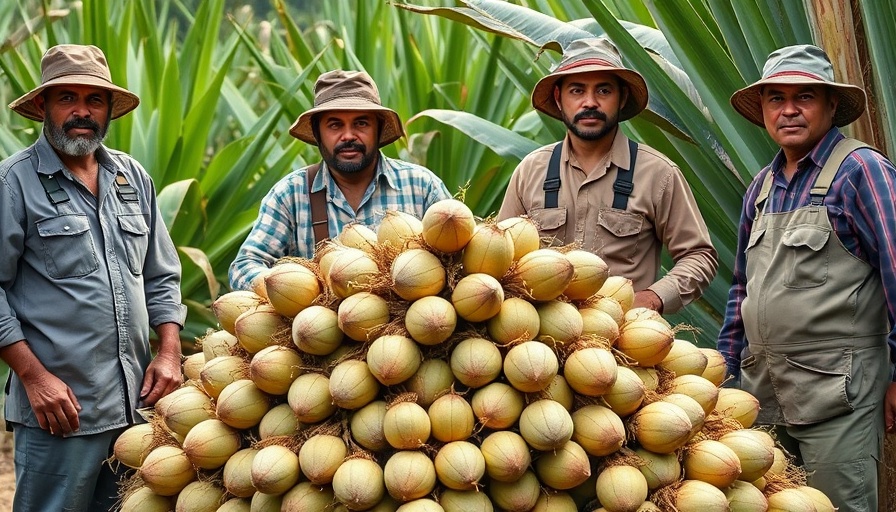
The Heart of the Matter: Sustainability Meets Community
Ecuador's hearts of palm industry is not just a burgeoning market; it’s a revolutionary approach to sustainable agriculture. With projections indicating that the hearts of palm market could reach a staggering $2.1 billion by 2033, companies like Pronaca are at the forefront of this expansion, mastering cultivation practices that are good for both the planet and the people.
A Model of Regenerative Farming
The magic lies in the way hearts of palm are harvested. Unlike traditional crops that require deforestation, the peach palm, or bactris gasipaes, has the capacity to thrive even when harvested. A key principle of regenerative farming is that cutting one stem actually encourages the growth of multiple new shoots, allowing the trees to regenerate rather than succumb to destruction. This innovative technique not only preserves forest ecosystems but also enriches local biodiversity.
Zero Waste Practices That Make Sense
Pronaca's commitment to sustainability goes beyond marketing rhetoric. They employ a zero-waste policy, ensuring that every part of the palm is utilized for other products, with even the processing water being purified and returned to its source. This long-standing commitment to environmental stewardship stands in stark contrast to the fleeting trends of many modern businesses.
Community Growth and Education
Perhaps the most inspiring aspect of Pronaca's operations is their dedication to community well-being. By collaborating with local farmers instead of displacing them, Pronaca empowers these individuals and fosters a cooperative model that benefits everyone. Their philanthropic initiatives, including the establishment of the Fundación San Luis, provide educational opportunities and combat childhood malnutrition, exemplifying how businesses can contribute positively to society.
The Bigger Picture: Opportunities for Change
This hearts of palm revolution offers broader implications for sustainable agriculture globally. As consumers become increasingly aware of the environmental and social impacts of their food choices, there’s a significant opportunity to embrace practices that promote ecological health and support local communities. The question remains: how can we, as consumers, advocate for and align with such practices in our own dietary habits?
 Add Row
Add Row  Add
Add 



Write A Comment